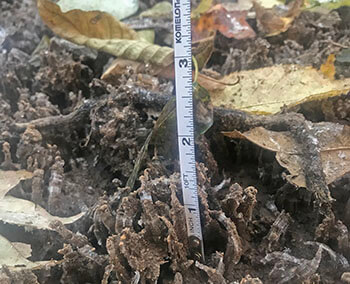Frost Seeding Clover
Jan 11, 2021

HOW FROST SEEDING WORKS
The broadcasted seed is gradually buried in the soil as the ground expands and contracts from early morning freezes and afternoon thaws. This method does not disturb the existing sod, so it is good for erodible areas. Access to the area for grazing is quicker than conventionally tilled seedbeds, and it’s economical, requiring no expensive equipment, just seed and labor.
7 TIPS TO FROST SEEDING CLOVER SUCCESS
The broadcasted seed is gradually buried in the soil as the ground expands and contracts from early morning freezes and afternoon thaws. This method does not disturb the existing sod, so it is good for erodible areas. Access to the area for grazing is quicker than conventionally tilled seedbeds, and it’s economical, requiring no expensive equipment, just seed and labor.
7 TIPS TO FROST SEEDING CLOVER SUCCESS
- Perform soil test.
- Begin frost seeding clover in February — mid-month is ideal — for best results. The freezes are minimal when clover gets established. If you miss this window, a chain harrow in March will work.
- Cattle can remain on field during and after seeding. When clover is 3-4 inches tall, remove cattle and wait to reintroduce them after stand is established.
- Choose white clover for its persistence for grazing and a mixture of red and white clover for hay and pastures.
- Choose these improved seed varieties — Will Ladino white clover and FSG 401RC red clover, both available pre-coated and inoculated.
- Pasture should include 25-30 percent clover for maximum production results. To achieve that percentage, frost seed 1-2 pounds of white clover and 4-6 pounds of red clover per acre.
- Selective herbicides can be applied to an established stand of clover to reduce broadleaf weeds.